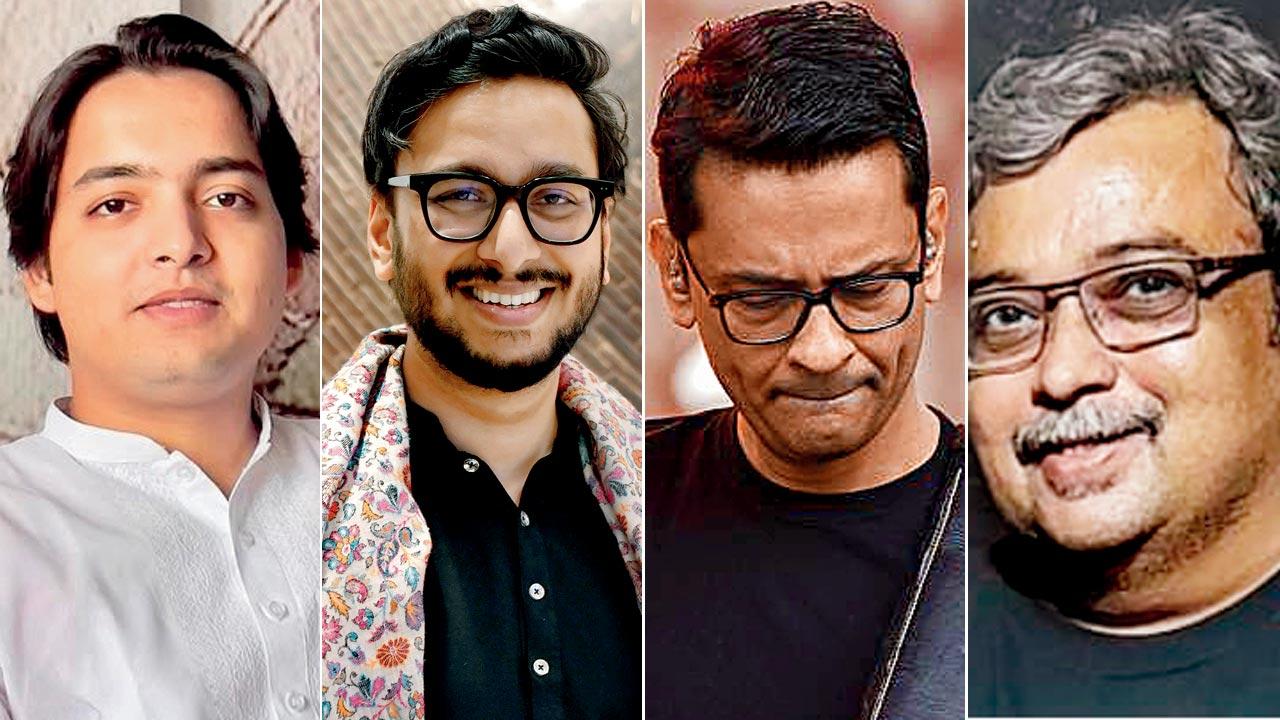Rishabh Rikhiram Sharma has made the sitar cool again—but is the adulteration of classical music in the pursuit of fame a slippery slope?

Pic/@rishab- music
No, this is not a hit piece on sitarist Rishab Rikhiram Sharma. It is, in fact, a dissection of the polarised views on his particular brand of fusion music melded with his flair for showmanship. Is it a passing fad, or the new way of classical Indian music?
Sharma’s shows are not just him sitting on a stage crossed-leg, sitar astride his lap. He’s got pyrotechnics and confetti in a packed arena. Even his stage look defies the conventions of classical music; Sharma dons something between a tannur (worn by sufi dancers during whirling dervishes) and a kurta, mesmerising the audience both auditorily and visually, with intricate henna designs on his hands as they pluck at the sitar strings. It’s a carefully curated and well-marketed vibe, and by drawing Gen Z fans, Sharma is undoubtedly taking the sitar to new audiences. A rockstar sitarist?
 Rishab Sharma has become one of the first to have full sold out 10-city tour. Pic/@rishabmusic
Rishab Sharma has become one of the first to have full sold out 10-city tour. Pic/@rishabmusic
Not everyone appreciates Sharma’s fast and loose approach to the traditions of Indian classical music, especially as “the last disciple of the late [Sitar maestro] Ravi Shankar”, as he claims to be.
The traditional vs experimental debate came to a head earlier this month, when news anchor Mangalam Maloo (@blitzkreigm) put out a post on the ‘gram stating “there is something off” about Sharma’s fame. Maloo’s post goes on to say, “The hype around him is writing cheques that his skill can’t cash. This isn’t about him—he’s doing an incredible job marketing himself and the instrument!” Maloo jibes, “It’s like a foreigner eating chaat for the first time at a 6-star hotel and going crazy about it. Not his fault. But deep down, the chef, his staff and even the said tourist’s accompanists know—this is far from the real thing,” it says. The post now has over 11,000 likes and 900 comments.
 Mehtab Ali Niazi, Tushar Lall, Gaurav Chintamani and Narendra Kusnur
Mehtab Ali Niazi, Tushar Lall, Gaurav Chintamani and Narendra Kusnur
Sharma’s fanbase is predominantly Gen Z, with his sitar cover of the Game of Thrones theme being one of their favourites. Twenty-somethings form a majority of the crowd in his 10-city tour—Sitar for Mental Health—where he’s been playing to venues packed with over 10,000 listeners. The fervour of his fans is palpable in the comments section on his Instagram page (@rishabmusic). “I was there amongst those 12,000. It was a magical evening,” says one young fan of his experience attending the tour concert. “Thank you for healing us,” says another.
Mehtab Ali Niazi, sitarist and vocalist, grew up playing the Sitar with Sharma. He lets it slip that he would often do riyaaz on the sitar belonging to Sharma’s father, renowned instrument-maker Sanjay Sharma aka Rikhi Ram. “I believe that when you do fusion music like this, especially for the younger audience, then it’s up to you where you take them with your music,” says Niazi, “What it’s meant to do is to slowly take listeners on a journey towards the pure and unadulterated form of classical music, never once compromising on the devotion the music needs.”
Niazi believes that what Sharma has been able to accomplish can’t be ignored. “In terms of what he has done for the instrument, this is one of the biggest waves of interest we have seen for the sitar. As a sitarist, we cannot undermine the effort it has taken, whether it’s his sense of music production or thought to presentation,” he says. “At the same time, we must be careful about the future of Indian classical music and be very aware of the direction we are headed in.”
This divide between purists and the unconventional comes on the heels of the Lollapalooza India fest held in the city in March, where one of the biggest names was sitarist Niladri Kumar. He played to an eager, young crowd that listened with rapt attention, recalls Gaurav Chintamani, the bassist for Advaita, one of India’s most reputed fusion bands. “We don’t think twice about ‘corrupting’ a raga,” says Chintamani of his band, “I understand that purists might not be a big fan of fusion music, but we should trust the intent of anyone who knows music and is trying to make a connection in whatever way.”
Is it about the art of popularity, or both? “Any artist who says that they do not prize popularity is not being honest. We all want people to love our music, and as long as it connects with someone, there shouldn’t be a problem,” says Chintamani.
Even amid musicians who have embraced fusion, there’s a call for being serious about, and avoiding gimmicks. The Indian Jam Project was one of the first to come out with covers of Hollywood movie scores on Indian instruments in 2014. Their covers of Titanic and Harry Potter scores is beloved to many. Fusion is not the only kind of music the band’s composer-arranger Tushar Lall has had success with though; Lall has scored Bollywood projects such as Brahmāstra: Part One – Shiva (2022) and Curry & Cyanide: The Jolly Joseph Case (2023).
Lall “obviously does not feel that playing western music on Indian instruments is a problem”. The problem, he tells us over the phone, is that most musicians who play Indo-western fusion often get carried away when they have cracked its code. “In classical music, your work and more importantly, your longevity speak louder than trends. Fusion can be a delicate space — virality doesn’t equal lasting impact. I’ve ridden that wave myself. We prefer to stay focused on the music and let time and audiences decide,” he adds.
“Fusion is not new, but the purist will always oppose it,” says music journalist Narendra Kusnur. He talks about sitarist Ananda Shankar, who in 1970 released covers of tracks by The Doors and The Rolling Stones: “Even [the band] Shakti, with the influence of Carnatic music, has been able to find a younger audience. Purists say fusion doesn’t work, but I feel that if it is done well, there is no harm in it.”
As far the gimmicky side of fusion goes, Kusnur says, “In the social media age, we are seeing people indulge in a lot of gimmicky and flashy fusion; covers of Guns N Roses or Deep Purple songs seem to be the order of the day, but the point is that it [fusion] should serve as something that reels the audience into listening to classical.”
Chintamani adds, “All music is fine. The ask is that one keep improving their art.”
 Subscribe today by clicking the link and stay updated with the latest news!" Click here!
Subscribe today by clicking the link and stay updated with the latest news!" Click here!








